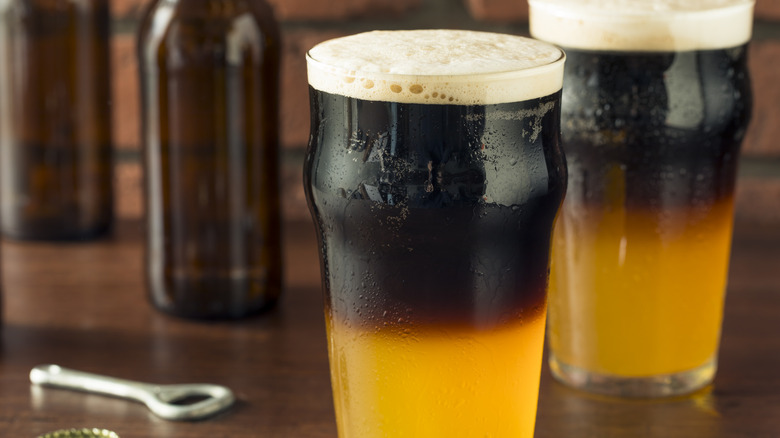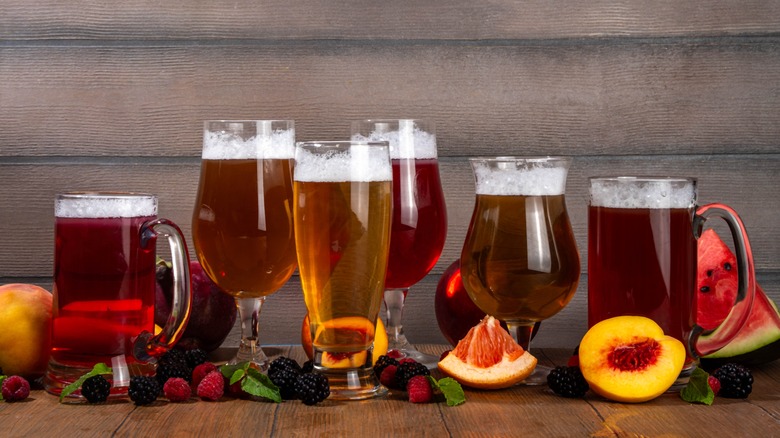Why One Of The Best Mixers For Beer Is Simply Another Beer
The art of making cocktails has inspired enthusiasts and mixologists alike to seek out exceptional spirits, rare bitters and tinctures, and a variety of juices and other mixers. But beer can also be the base for unique mixed drinks, as evidenced by the classic michelada and more recently, the popularity of the spritz-adjacent spaghett.
Yet while you can certainly use suds as a base for your next tequila drink, it turns out that maybe what you should be mixing with beer is simply more beer. Producers, both professional and homebrewers, have long been blending beers. Sometimes, the goal is to fix or perfect a specimen. For example, blending stronger, more assertive and alcoholic beers with less intense options can result in a more approachable drink, or dial in a particular mouthfeel or aromatic quality. Blending beers can also allow for a more consistent product that masks variation in flavor. For some brewers, the goal is to create something entirely new. Belgian brewers known for their sour ales blend different ages of their lambics to achieve the famously complex gueuze (not unlike whiskey or sherry). And then there are the combos that have become mainstays thanks to their bar-going fanbases. Take the black and tan cocktail, which is a combination of a stout (like Guinness) and a lager (like Harp or Bass), which allows the richer, more roasty profile of the darker beer to play off the crisper, cleaner pairing (and requires a particular pouring method to get the perfect pint).
Creating your own beer combo
To create your own beer blend concoctions, it's simply a matter of trial and error. Try to envision what flavor profile you'd like to end with, and start with incremental additions of one beer into another. Maybe combine a hop-forward IPA (which highlights the key ingredient that makes beer bitter) with an effervescent Berliner Weisse for a drink that doubles down on citrusy tartness. Add a bit of raspberry lambic to your favorite dry stout for a chocolate-covered berry profile (providing a new answer for how to drink a stout beer), or a smoky rauchbier with your favorite pumpkin ale, giving you autumn campfire vibes in a glass.
You don't need any fancy cocktail gear or to even shake these liquids together — a gentle stir will get the job done to combine. You can garnish with fruit or herbs to highlight and complement your drink's characteristics, and even come up with food pairings for sharing. If you hope to recreate someday, you can take notes on your ratio for future reference, and make it your signature sudsy cocktail. But regardless of what you decide to combine, this beer plus beer equation results in an imbibable adventure.

